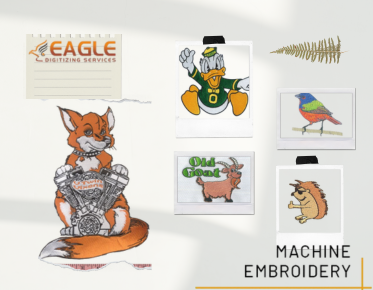Understanding Complexity in Embroidery Designs
Embroidery is a beautiful art form that transforms simple fabrics into intricate pieces of art. However, not all images are suitable for embroidery. Some images are too complex, making them challenging to convert into embroidery designs. This complexity can arise from various factors, including the level of detail, color gradients, and the overall size of the design. Understanding these factors is crucial for anyone looking to create embroidery designs that are both beautiful and feasible.
Factors Contributing to Complexity in Embroidery
1. Level of Detail
One of the primary factors that make an image complex for embroidery is the level of detail. Images with intricate details, such as fine lines or small text, can be difficult to reproduce with thread. Embroidery machines have limitations in terms of the minimum stitch size they can produce, which means that very fine details may not translate well into stitches. Simplifying the design by reducing the number of details can help make it more suitable for embroidery.
2. Color Gradients
Color gradients present another challenge in embroidery. Unlike digital images, which can display smooth transitions between colors, embroidery relies on discrete threads. This means that achieving a gradient effect requires careful selection and blending of thread colors, which can be time-consuming and may not always produce the desired effect. Designs with large areas of gradient may need to be adjusted to use solid colors or simplified gradients.
3. Size of the Design
The size of the design also plays a significant role in its complexity. Large designs with many elements can be difficult to manage, both in terms of the time required to complete the embroidery and the potential for errors. Additionally, larger designs may require more thread colors, increasing the complexity of the project. It's often beneficial to scale down the design or focus on a specific element to make it more manageable.
Technical Considerations in Embroidery Digitizing
1. Stitch Types and Density
The choice of stitch types and their density can significantly impact the complexity of an embroidery design. Different stitch types, such as satin, fill, and running stitches, are used to achieve various effects. However, using too many different stitch types in a single design can complicate the digitizing process. Additionally, the density of the stitches must be carefully managed to avoid issues such as puckering or thread breakage.
2. Machine Limitations
Embroidery machines have specific limitations that must be considered when creating a design. These include the maximum hoop size, the number of thread colors that can be used, and the machine's ability to handle complex patterns. Understanding these limitations is essential for creating designs that are not only beautiful but also feasible to produce with the available equipment.
Practical Tips for Simplifying Complex Designs
1. Simplify the Design
Simplifying the design is often the first step in making a complex image suitable for embroidery. This can involve removing unnecessary details, reducing the number of colors, and focusing on the most important elements of the design. By simplifying the design, you can create a more cohesive and visually appealing embroidery piece.
2. Use Software Tools
There are various software tools available that can help simplify complex designs for embroidery. These tools can assist in converting images to embroidery files, adjusting stitch types and densities, and previewing the final design. Using these tools can save time and help ensure that the final product meets your expectations. For instance, embroidery digitizing software can be invaluable in this process.
3. Work with a Professional
If you're struggling to simplify a complex design, consider working with a professional embroidery digitizer. These experts have the skills and experience needed to transform intricate images into beautiful embroidery designs. They can provide valuable insights and recommendations to help you achieve the best possible results.
Future Trends in Embroidery Design
As technology continues to advance, the possibilities for embroidery design are expanding. New software tools and machine capabilities are making it easier to create complex designs with greater precision and detail. Additionally, the growing popularity of custom embroidery is driving demand for unique and personalized designs. By staying informed about these trends and embracing new technologies, you can continue to push the boundaries of what's possible in embroidery. Eagle Digitizing excels in providing professional embroidery digitizing services, ensuring every design is crafted with unmatched precision.


.png)
.png)